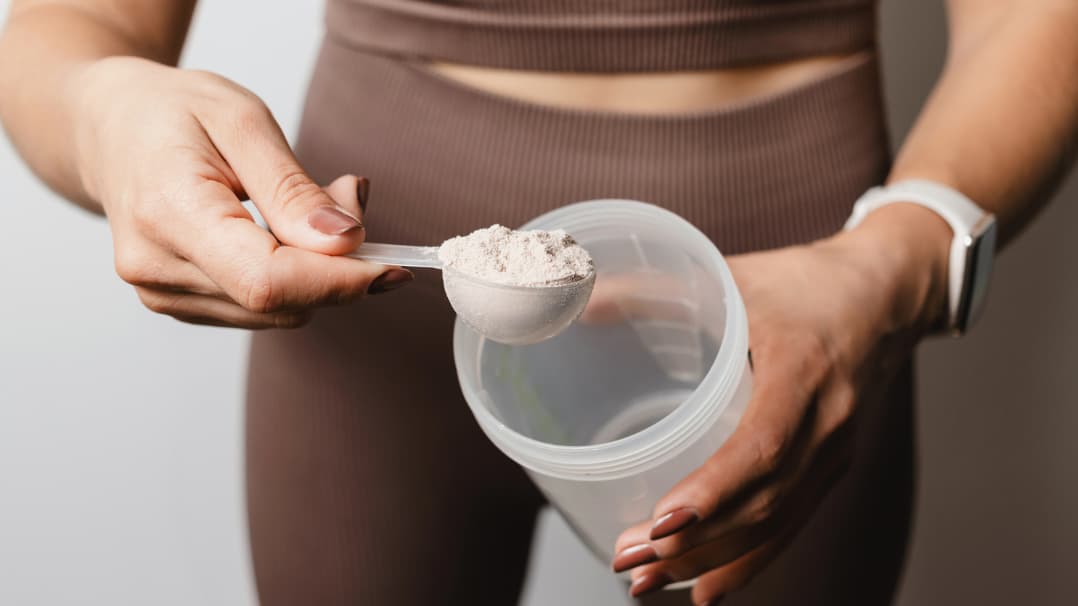Sirtmax® Kaempferia parviflora

Kaempferia parviflora is found in the upper Northeastern regions of Thailand. Root extracts have a long history of use and a reputation for being a health tonic and energy enhancer (i.e., Thai ginseng). The novel active constituents are a special type of polyphenol called polymethoxyflavonoids. Sirtmax® Kaempferia parviflora root extract is standardized for polymethoxyflavonoid content.*
Top Benefits of Sirtmax®
Supports healthy aging*
Supports mitochondrial function*
Supports muscle strength and endurance*
Supports antioxidant defenses*
Qualia’s Sirtmax® Sourcing
Sirtmax® has been used in animal and human research studies.
Created by Tokiwa Phytochemicals, a leader in standardized Kaempferia parviflora supplementation.
Highest concentration, full-spectrum root extract, with triple standardization for 5,7-dimethoxyflavone (≥ 4%), 3, 5, 7, 3', 4'-pentamethoxyflavone (≥ 3.5%), and total polymethoxyflavonoids (≥ 15%).
Grown in Thailand & Laos.
Sirtmax® is a registered trademark of Tokiwa Phytochemical Co., Ltd.
Sirtmax® Formulating Principles and Rationale
We consider Kaempferia parviflora to be in the adaptogenic herb category; following hormetic dosing principles (see Qualia Dosing Principles) with a high likelihood of having a hormetic range (i.e., a serving range below and above which results could be poorer). We have selected a serving that is within the studied range in humans.*
Kaempferia parviflora Key Mechanisms
Supports mitochondrial structure and function*
Supports transcription factors of mitochondrial biogenesis (PGC-1α, ERRα, NRF1, TFAM)* [1–3]
Supports mitochondrial number* [1]
Supports ATP production* [3]
Promotes β-oxidation (fatty acid metabolism) – upregulates PPARγ and PPARδ* [2,4]
Promotes exercise performance*
Supports endurance performance* [1,2,5,6]
Supports post-exercise recovery* [1]
Supports muscle strength* [5,6]
Supports muscle metabolism* [1]
Supports healthy metabolic function*
Supports healthy fat accumulation and blood/liver lipid levels* [4,7,8]
Promotes differentiation of brown adipocyte cells* [4]
Supports UCP1 and thermogenesis of brown adipose tissue* [4,7,8]
Promotes whole-body energy expenditure through activation of brown adipose tissue* [7,9]
Promotes lean body mass* [2]
Promotes healthy aging and longevity*
Supports neuroprotective functions* [10]
Counters the production of advanced glycation end-products (AGEs)* [11]
Promotes healthy cardiovascular NO signaling and vasodilation* [12–15]
Supports antioxidant enzymes* [5]
Supports AMPK signaling* [2,3]
Supports SIRT-1 signaling* [2,11]
*These statements have not been evaluated by the Food and Drug Administration. This product is not intended to diagnose, treat, cure, or prevent any disease.
REFERENCES
[1]K. Toda, S. Hitoe, S. Takeda, H. Shimoda, Heliyon 2 (2016) e00115.
[2]M.-B. Kim, T. Kim, C. Kim, J.-K. Hwang, J. Med. Food 21 (2018) 30–38.
[3]K. Toda, S. Takeda, S. Hitoe, S. Nakamura, H. Matsuda, H. Shimoda, J. Nat. Med. 70 (2016) 163–172.
[4]H. Kobayashi, E. Horiguchi-Babamoto, M. Suzuki, H. Makihara, H. Tomozawa, M. Tsubata, T. Shimada, K. Sugiyama, M. Aburada, J. Nat. Med. 70 (2016) 54–61.
[5]J. Wattanathorn, S. Muchimapura, T. Tong-Un, N. Saenghong, W. Thukhum-Mee, B. Sripanidkulchai, Evid. Based. Complement. Alternat. Med. 2012 (2012) 732816.
[6]K. Promthep, W. Eungpinichpong, B. Sripanidkulchai, U. Chatchawan, Med. Sci. Monit. Basic Res. 21 (2015) 100–108.
[7]T. Shimada, T. Horikawa, Y. Ikeya, H. Matsuo, K. Kinoshita, T. Taguchi, K. Ichinose, K. Takahashi, M. Aburada, Fitoterapia 82 (2011) 1272–1278.
[8]S. Yoshino, M. Kim, R. Awa, H. Kuwahara, Y. Kano, T. Kawada, Food Sci Nutr 2 (2014) 634–637.
[9]M. Matsushita, T. Yoneshiro, S. Aita, T. Kamiya, N. Kusaba, K. Yamaguchi, K. Takagaki, T. Kameya, H. Sugie, M. Saito, J. Nutr. Sci. Vitaminol. 61 (2015) 79–83.
[10]H.-I. Moon, S.-B. Cho, J.-H. Lee, Y.-C. Lee, J.-H. Lee, C.-H. Lee, S.-K. Kim, Phytother. Res. 25 (2011) 1215–1217.
[11]A. Nakata, Y. Koike, H. Matsui, T. Shimadad, M. Aburada, J. Yang, Nat. Prod. Commun. 9 (2014) 1291–1294.
[12]S.K. Wattanapitayakul, M. Suwatronnakorn, L. Chularojmontri, A. Herunsalee, S. Niumsakul, S. Charuchongkolwongse, N. Chansuvanich, J. Ethnopharmacol. 110 (2007) 559–562.
[13]P. Weerateerangkul, S. Palee, K. Chinda, S.C. Chattipakorn, N. Chattipakorn, J. Cardiovasc. Pharmacol. 60 (2012) 299–309.
[14]P. Tep-Areenan, P. Sawasdee, M. Randall, Phytother. Res. 24 (2010) 1520–1525.
[15]P. Tep-areenan, K. Ingkaninan, M.D. Randall, Asian Biomed. 4 (2010) 103–111.





